The news is interesting as a testing ground for the MFE (media-fatigue effect), also known as "Who's Seen The Higgs This Week" factor. It's a result of the "blog, blog, something will last" policy that a few irresponsible individuals have decided to follow in this uncertain pre-shutdown era of upward data fluctuations.
Getting serious, let's see what this is about. DZERO and CDF have been searching their data for fourth-generation quarks for over 20 years now, and they have produced increasingly tight limits on the existence of these particles: They search for them, do not find enough to stick out of predicted backgrounds, and infer that such particles, if they were produced, were fewer than a certain amount. From that information, knowledge of the production rate that the new quarks would have (which depends on their unknown mass) allows to set a lower limit on the mass (a graph I attach at the bottom of the post will clarify this further, but let me continue with my introduction now).
If we go back in the history of these searches, CDF at one point saw an excess in the 400 GeV region. It was a fluctuation, as became clear when a higher-statistics analysis saw a better agreement with standard model backgrounds. Check the two relevant plots below, which show the reconstructed mass of hypothetical t' quarks decaying into lepton, neutrino, and jets:
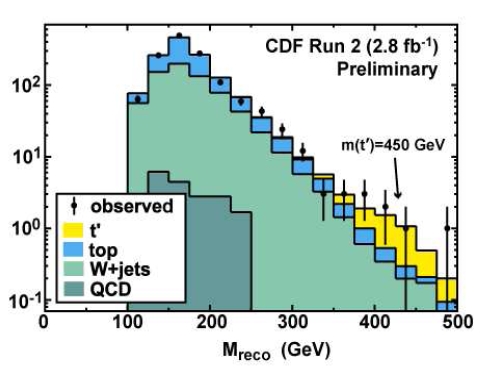
Above you can see the 2008 2.8/fb result, with the hint of a excess at the high-mass end of the spectrum. The yellow contribution is the one allowed by the data to a t' signal.
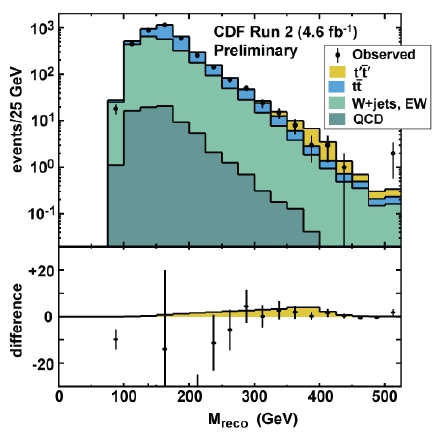
Above, the 2010 reanalysis with 4.6/fb of data. Note that no big excess sticks out of the slightly modified background shape.
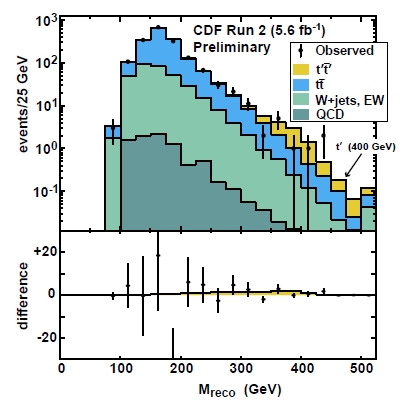
And finally, above is the 2011 result, based on 5.6 inverse femtobarns of data: As you can see, there is nothing significant going on at 325 GeV or in that ballpark anyway.
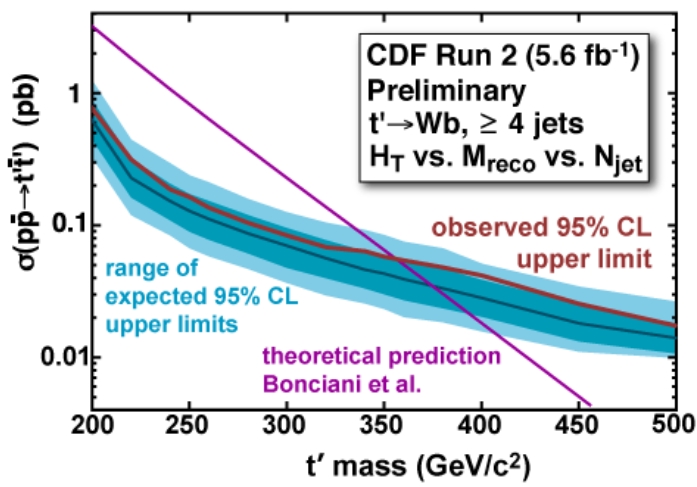 From the above data (plus information on the event HT, but that's a detail we need not discuss here) CDF extracted the limit shown on the right on the t' cross section as a function of the t' mass. The limit, compared to predicted rates (the purple curve) allows to exclude the existence of a t' quark with mass below 358 GeV.
From the above data (plus information on the event HT, but that's a detail we need not discuss here) CDF extracted the limit shown on the right on the t' cross section as a function of the t' mass. The limit, compared to predicted rates (the purple curve) allows to exclude the existence of a t' quark with mass below 358 GeV.And now let us see what DZERO finds, with a quite similar search (in 5.3/fb of data, little less than the newest CDF result), for events with the typical "lepton plus jets" signature of decay of heavy quark pairs. The figure on the right shows the DZERO mass distributions in "muon plus jets" and "electron plus jets" events, respectively. Note that the DZERO analysis is quite similar to the CDF one, in that it considers the same signature and employs as discriminant variables the same two quantities (mass and total transverse energy in the event, HT).
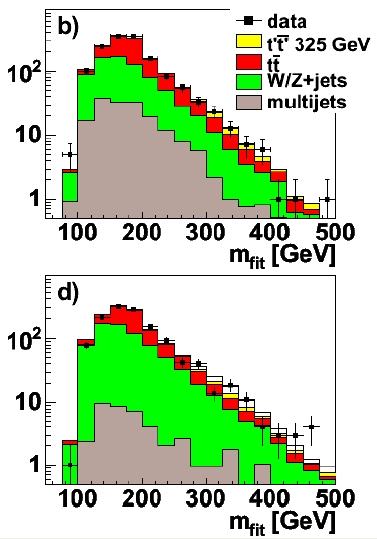 As you see, there is an excess in the muon sample, but no excess in the electron sample. The combined limit from DZERO, however, accounts for both, and is considerably higher than what they would have obtained if there had been no fluctuation, as you can see below (scroll down): only 285 GeV.
As you see, there is an excess in the muon sample, but no excess in the electron sample. The combined limit from DZERO, however, accounts for both, and is considerably higher than what they would have obtained if there had been no fluctuation, as you can see below (scroll down): only 285 GeV.So, we are facing the following situation: a signal is seen by DZERO in only one of two datasets where it should appear. The mass and rate are incompatible with a recent analysis by CDF. Do I need to say more on the likelihood that this is a new particle ? I guess not.
The relevant question then becomes: If this is not a new particle, is it a systematic effect due to the bad modeling of the background shape, or is it just the result of a fluctuation ? In this particular instance, I am leaning toward the latter explanation. DZERO has been studying these distributions for many years, and it is unlikely that they erred much in the background distributions. Instead, a statistical fluctuation is always possible -also made more likely by the fact that there is no effect in the electron sample. Incidentally, note that the recent CDF "W+jj" signal (a totally different analysis, and not as well-run as this one) sees an excess in both the electron and the muon final state, which points to a systematical nature of the effect (speculations exist on the nature of such effect).
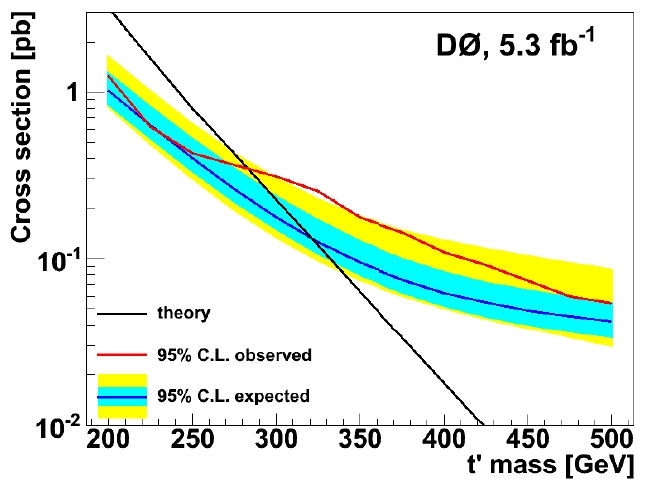
And finally, will this new DZERO analysis give us some input on the media fatigue effect ? Well, I am sure that this particular "signal" will not see the spotlights of main science news: it is not as significant, not as yummy, and harder to explain to the public. So it is going to be hard to conclude anything... But let's sit and wait.



Comments